Images
- Ritratto d’Ignoto di Antonello da Messina (Courtesy of Mandralisca Museum)
- Crater Seller of Tuna (Courtesy of Mandralisca Museum)
- Ancient Greek Coin (Courtesy of Mandralisca Museum)
- Ancient Greek Coin (Courtesy of Mandralisca Museum)
- Enrico Pirajno’s Scientific Cabinet (Courtesy of the Mandralisca Museum)
- Enrico Pirajno’s Scientific Cabinet (Courtesy of the Mandralisca Museum)
- Selection of Shells (Courtesy of the Mandralisca Museum)
- Ancient Coin (Courtesy of the Mandralisca Museum)
- Cefalù
- Cefalù Cathedral
- Inside the cathedral
Suggested Readings
- Alessandro dell’Aira, Salvatore e Sandro Varzi, Sfidando l’Ignoto, Antonello e l’enigma di Cefalù, Torri del Vento
- Gioacchino Barbera, Antonello da Messina, Sicily’s Renaissance Master, Yale University Press
- Marco Bussagli, Antonello da Messina, Giunti
- Raffaello Causa, Antonello da Messina, Fabbri Editori
- Vincenzo Consolo, Il sorriso dell’ignoto marinaio, Einaudi
- Gabriele Mandel, L’opera Completa di Antonello da Messina, Rizzoli
- Federico Zeri, La percezione visiva dell’Italia e degli Italiani, Einaudi
Suggested Sites
Music Credits
- Main Theme – Valerio Mirone
- Fluid Motion – Moscardo
- _66666666666666666666_66666666666666666666_66666666666666666666_66666666666666666666_66666666666666666666_66666666666666666666 – Monplaisir
- Epic Piano Theme – jonathan_a
- Forgotten Land – Doxent Zsigmond, Ft: Gurdonark, Joanne Gabriel
- Show Me Dance – khalafnasirs
- Fainted – Unheard Music Concepts
- Scary Synths and Drum Samples – Nickleus
- Cantate Domino – Anonymous Choir
- Parisian – Kevin MacLeod
- Sad Marimba Planet – Lee Rosevere
Transcription
What you’re hearing now is the sound of an old vessel sailing through the waves of the Milazzo Gulf, Sicily, Mediterranean sea, 1852. The sun, rising from the water, casts his light on a man, who’s standing alone, on deck. He’s looking towards Lipari, the island he left earlier that night, and holds a small envelope in his right hand. Each wave that crashes over the side of the ship makes his grip tighter, his knuckles whiter. Wrapped in oilskin, a precious painting awaits to be hanged in his new home. It’s old, centuries old, and people say it’s cursed. The man portrayed in the painting is not an ordinary man, neither a king, nor a priest, nor a peasant, nor a sailor. It’s the old devil and while he looks at you, while he smirks at you, he drives you mad. That’s what happened to the young daughter of the previous owner, that’s what pushed him to undersell the Portrait to the man standing alone, on deck.
The man, the portrait, they both existed, that’s not fiction. What about the curse? The sell in Lipari? The crossing, the very sounds you’re hearing right now? We don’t know that for sure. But, do not worry, this often happens when you unravel old facts. We’ll get to the bottom of the story. Please, bear with me, this story comes from Ars Dicendi and today we’re dealing with Italian Culture.
When you approach the Portrait of Anonymous, that’s the official name of the enigmatic painting we are talking about, only two things are sure. The first is the painting itself: it exists, it’s in front of you, smirks at you while you stare at him with a puzzled look. Secondly, the Anonymous’ home is, and has been, the Mandralisca Museum in Cefalù, an ancient town on the northern coastline of Sicily. The Portrait sits there, in a quiet hall at the very heart of the Mandralisca Palace; that’s where Enrico Piraino of Mandralisca, its former owner, has left it as a legacy to the townspeople. Beginning and end of the line: on one hand the Portrait exists because it has been painted. On the other, it took its rest in the hands of a Sicilian baron. But what’s in the middle?… Let’s start by looking into the Portrait itself, the first certain aspect of this story. To experience a glimpse of its magnetism, go to italianculturepodcast.com: you’ll find an high-res image that’ll come in handy in the following part of the show.
If the Portrait of Anonymous exists, then it has a past. And if it has a story, you can try to decipher it by looking at the picture: that’s what art historians have done in the past centuries. They studied the pictorial features of the Portrait and confronted them with the other paintings by Antonello da Messina: this kind of studies made it possible to attribute the painting to Antonello in the first place. So, what about it? The Portrait is rather small: the wooden panel upon which it has been painted is just 30 for 25 centimeters. The technique? Oil painting – one of the innovations Antonello introduced amongst the Italian Renaissance painters. The Anonymous lingers on the right side of the picture, framed in a three-quarter profile. You can see his whole head and his shoulders, in the canonical form of the half-length portrait. If you look closely, you will notice that the lower part has been removed in a distant past: several Antonello’s works display a painted frame that serves two purposes. They both enhance the sense of depth and help to ascertain the paternity of the painting. “Antonello me pinxit”, they use to say, “Antonello painted me”. Someone cut that part off the Anonymous’ Portrait. We don’t know who this one was, but we know why it did that. If you tilt the panel a bit and look at its back, you’ll read a short sentence, claiming that the amputation seemed necessary to “give the portrait a better composition”. Yes, it sounds a bit arrogant, to say the least.
Moving up, you’ll notice the Anonymous’ clothing. A black robe, open on a white skirt, embellished by some kind of crochet collar: a fine set of clothes, that’s for sure. That kind of fine that only a wealthy man would and could wear in the fifteenth century.
Then you’ll finally reach the Anonymous’ face. He’s not a beautiful man, nor an ugly one but you’ll probably get some chills while exploring his cheeks, where Antonello masterfully sprinkled a handful of imperceptible beard hair. Then, your gaze will be attracted towards the full lips, conjoined in an incipient smile. It’s a weird kind of smile indeed: more of a grin. The Anonymous is way smarter than you and he’s having fun while you strive to solve his mystery. “Try if you dare” – that’s what his gaze is telling: it’s not defiant, tough. Small and sardonic, the Anonymous’ eyes unsettles us because they hide something we cannot define. There’s a vivid void behind those eyes.
Antonello was an unparalleled master in reproducing this type of psychological insight. He reinvented a pictorial trend born in the Flanders region. Great painters, like Jan Van Eyck or Petrus Christus, were able to perfectly render their model’s physiognomy. Their patron certainly enjoyed noticing how their looks were carefully depicted, alongside their clothes and furniture. All of that conveyed their richness, their social status. The same social status we find in the Anonymous’ attire. But Antonello went one step further. How? Giovanni Carlo Federico Villa, professor in the history of modern art at Bergamo University, has no doubt:
“When we look at Antonello’s works we notice something baffling. He never depicts his subjects just in a detailed way, as a Flemish painter would do – he’s indeed able to give us a hint of them, some sort of suggestion of that item, of that man. His pictorial language is synthetic, both visually and psychologically. Antonello was able to render the smallest details, the shadows, with few, rapid brush-strokes through which we experience some kind of agnition. Again, he drops a hint of something without saying anything specific. That’s the secret behind his portraiture: Antonello’s ability to communicate so much with so little is unique and will exert a deep influence on art ”
Antonello’s craft made the Anonymous come to life. He is still alive, he still haunts us, more than five hundred years after he has been painted. And, remember, he has been there in-between. His smile mocked peasants and noblemen alike, ridiculed clergy people, kings and queens. But some of them were a bit crabby, that impertinence was just too much for them. So, they hit the portrait, trying to disfigure the Anonymous, censoring his smile, popping his eyes out. They let a blade run across the lips, the cheeks, the eyes. In the second half of the nineteenth century, the Portrait was urgently brought to Florence for restoration. After that, Giovan Battista Cavalcaselle, an expert in fine art, analyzed and copied the Portrait: no scar was found during this round of studies in 1860. And yet, in 1953, the Portrait was hospitalized again, this time in Rome: the Istituto Centrale del Restauro noticed a cicatrix running the length of the left cheek, exploring the eye socket and landing on the nose. There’s further evidence that in ancient times someone misused the wooden panel, to put it mildly. Sandro Varzi is a scholar in fine arts and has extensively analyzed the Portrait’s bones and flesh: according to him, the painting had been used as kitchenware:
“There you see a circular burn that tells us the Portrait has been used as a pot mat: someone left a hot pot on the painted surface, thus burning the pigment. Look at these two series of small cuts: the first kind is deep and runs perpendicularly to the surface, while the second one is more superficial. Oh, well, it seems the Painting was also used as chopping board”
Countless pieces of art have been disfigured for countless reasons: in some cases, their nudity offended the eyes of the prude beholder. Sometimes their existence had to be erased from history. Several times, they have simply fallen in the wrong hands. Occasionally, the artists themselves had some part in the disfigurement of their works. It’s difficult to define the psychological mechanism that leads someone to hit an inanimate object and hope for feedback. But, you know, art is powerful, it stimulates emotions, it can kindle that spark of madness that’s hiding deep inside a person. That’s why the Anonymous needed a protector.
Enters Enrico Piraino, baron of Mandralisca. He was a peculiar guy. As a baron, he belonged to the Sicilian aristocracy and, therefore, was subject to the Bourbon family, rulers of the Kingdom of the Two Sicilies. Nevertheless, he was a fervent unionist during the wars that led to the unification of Italy, achieved in 1861. He sided with the invading state, the Kingdom of Sardinia, which finally ended up being the Kingdom of Italy after the unification. Besides being into politics – he was later elected member of the newborn Italian parliament – Piraino is remembered as a scientist, gifted with a curious mind. Antonio Purpura is the chairman of the Mandralisca foundation, named after Enrico Piraino. Here’s how he depicts the baron:
“ Piraino’s researches were mostly focused on archeology. He directed several expeditions both in Lipari and in the Cefalù’s area. What he recovered during his archeological season is now on display at the Mandralisca Museum. Besides that, he was an expert in malacology, that is the study of snails and mollusks: his collection was one of the most complete in Europe at that time. Piraino also gathered a vast collection of paintings and fine art that somehow echoes the Sicilian culture throughout the ages”
You’ll find his palace where it has always been – thirteen, via Mandralisca – a few steps away from the Norman dome of Cefalù. You can visit the silent halls where Enrico Piraino used to amass his collections of coins, ancient books, art pieces and relics from the past: it’s a museum now, the Mandralisca Museum, for the baron left most of his belongings and estates to the townspeople. That’s where you’ll have the great privilege of meeting the Anonymous in person: the painting is there, secured in a vault that keeps microbes and pointy objects away.
So here it is, the Anonymous looking at you. When we deal with this strange picture, even the most certain facts hide some kind of mystery. Despite the portrait being an important part of Enrico Piraino’s legacy, it is not enlisted in the baron’s will. And here’s something more: there is no trace of the portrait in the whole Mandralisca’s archive. The baron never spoke of it, it seems he was hiding the painting from something, from someone. There’re only a few references to the Portrait in a letter written by Cavalcaselle, the art scholar who studied the Anonymous in 1860. Anyway, the portrait IS here, and it was part of Enrico Piraino’s belongings – these are the two facts. And, if only two things are for sure – the ownership of the Portrait and Portrait itself – we should focus on these two things. Who is the man in the painting? How did Piraino acquire the Portrait? These two questions are tightly related.
Let’s start with the first question. Who is the Anonymous portrayed by Antonello da Messina? We can give three answers, or, at least, we can formulate three hypotheses. The metaphysical answer. The short one and the long one.
Hypothesis number zero. We call it zero because this is not a true answer but still gives us a more complete understanding of how the “magic” of the Portrait works. Leonardo Sciascia, one of the most influential intellectual in post-war Italy, masterly framed the matter. He said that the Anonymous somehow expresses one of the many hidden aspects of our culture. Normally, when people stumble upon something new, they ask themselves “does this look like something I already know?”. This psychological phenomenon is typical of mankind in general, that’s just how our brain works. Italians, though, push it further by playing the so-called game of resemblances. They base their approach to anything vaguely human on some kind of physiognomic scheme. So, when Italians meet someone, or look at a statue or inspect a painting, they start looking for resemblances, trying to put a familiar face on the new experience. The first thing that pops in their mind is “this thing reminds me of someone I know”. That being said, we can now ask – who does the Anonymous look like? Does he look like the country mobster? Or the high-end gangster? Does he look like the rightwing or the leftwing senator? Maybe he looks like a simple peasant or resembles the most cunning lawyer. Sciascia even admitted that the Anonymous looks like him and Antonello. He just “looks like” – that’s Sciascia conclusion. What did he mean? Giovanni Carlo Federico Villa gives us an answer:
“Sciascia frames the very essence of Antonello’s craft, that is the ability to express the soul of the Anonymous without revealing his social class. He doesn’t need to, in the end, because the subject must have necessarily been an aristocrat to figure in one of Antonello’s paintings”
Now, it’s time for the short answer. Despite being brief, this answer makes us go back to a long time ago.
It’s 1852 and we’re back on the brigantine, with Enrico Piraino. We’re leaving Lipari, a small island not far off the Sicilian coastline. Enrico Piraino is holding the Portrait into his hands, still thinking about the peculiar story he just heard. The narrator is the former owner of the Portrait, the apothecary of Lipari, who was quite happy when the baron offered him good money in exchange for that painting. A cursed painting.
The apothecary has a small shop on the island and his daughter helps him behind the counter, preparing tincture for the Islanders and keeping the shop tidy. Even if she’s only 25, she is already considered a spinster, because in nineteenth-century rural Italy women used to get married way younger than now. Nevertheless, she seems to enjoy her life. Until the father started using the painting as one door of the sideboard. That relentless gaze, that forsaken smile has driven the poor girl mad. Is the Anonymous judging her? Is he mocking her for being an ugly maid who wasn’t able to find a man? Or, maybe, the Anonymous reminds her of an old-time lover, an unknown mariner who seduced her, loved her and finally left her to sail away. It’s impossible to say. We just know that the persistent gaze of the unknown mariner in the Portrait has made her mad. So, came the day, and sirocco was howling along the streets of Lipari. It is said that wind makes the people go insane or, at least, worsens their condition. That’s probably the case of the apothecary’s daughter, who grabbed a knife and stabbed the Portrait, killed the unknown mariner and maybe, let’s hope for her, came back to sanity. That’s how the Anonymous won his first set of scars.
The Portrait then, depicts an unknown mariner, a sailor who happened to infest the dreams of a poor girl from Lipari. This tale has been circulating forever: Vincenzo Consolo, writer and journalist, repeated and developed it in his book “Il sorriso dell’ignoto marinaio” – “The smile of the unknown mariner”. However, it’s impossible to track down the origin of the story, there’s no trace of it in Cavalcaselle’s account, nor in other sources. According to Sandro Varzi, the Lipari sell, the curse, this whole story is just that – a story Mandralisca invented while trying to protect his legacy from some relatives:
“I believe that this vague, untraceable narration was born of the risk of having the Portrait lost to someone outside baron Mandralisca’s line. The baron himself claimed that he bought the Portrait in Lipari and didn’t disclose that it had been in the family estate for a long time. Saying that the Anonymous was his own property, he kept at bay those relatives who could have claimed the painting if they knew it had been acquired by a common ancestor”
Apparently, the townsfolk in Cefalù liked the story and ended up believing the Anonymous was indeed a mariner: if the painting came from Lipari, an island, the subject must have been a sailor – that’s what they thought. But, apparently, we’re dealing with another legend. And an implausible one.
Antonello da Messina was well known during his life: recognized as a master, he was asked to become court painter by the Sforza family in Milan. And he refused: apparently, he thought he could make more money by taking commissions from different patrons. Actually, his works were worth a fortune, even at his times. According to some studies, one of his painting cost as two houses in Messina while he was alive. Do you think a common sailor could afford a price this high? It’s very unlikely that our Anonymous was a mariner. He must have been someone with large resources. Moreover, he must have been someone who had, let’s say, enough culture to understand why and how such a painting was an outstanding tribute to his ego. So, for the third and maybe final time: who is this guy mocking us throughout the ages? Who’s the Anonymous in the painting? Here’s the long answer.
A couple of years ago, Sandro Varzi, his son Salvatore and Alessandro Dell’Aira led an investigation on the matter and developed their own theory. They are, respectively, the curator at the Mandralisca Museum, a heraldry expert and a writer. We’ll follow their work in this final section, as they unravel the story of the Portrait in their book “Sfidando l’ignoto” – “Challenging the Unknown”. By the way, bear in mind that you’ll find suggested readings, photos, and additional material on our site, italianculturepodcast.com.
Varzi and Dell’Aira’s study started by questioning the very fabric of the painting. The authors turned it around and noticed a couple of marks that, until then, no one had never seen. Sandro Varzi discloses the details of his discovery to us:
“Let’s see: I completed an in-depth analysis of the Portrait before it left the Mandralisca museum to be part of the exhibition at the Scuderie del Quirinale. I mean, since there’s the so-called “nail-to-nail” insurance, we have to ascertain that the Painting is in mint condition when it leaves Cefalù, that it can sustain such a trip, that it can reach the destination in good shape and come back in the same state. That’s why we took a series of photos of both front and rear: I thoroughly documented the state of the panel by taking several macros of any small detail, like the woodworms’ holes for instance. And while I was looking at the pics I noticed the seals”
Two spots of yellow wax, sitting there for centuries. They are wax seals – that’s what emerged during a closer inspection – that kind of seals that were used to declare who was the owner of a precious object. You got a new book? You stamp your name on the first page. You just bought a masterpiece of Renaissance art? You pour a bit of wax on the back and imprint it with your seal. And, in this case, we’re talking about a quite peculiar seal. You can clearly recognize the Mandralisca’s coat of arms, two lions facing each other and, between them, a pear tree. But that’s not Enrico Piraino’s emblem, the last owner of the Portrait, because he couldn’t and wouldn’t use that emblem: on the top of it, above the lions, there’s a galero, that is a broad-brimmed hat, worn exclusively by clergy in the Catholic Church. So, the owner of the Portrait must have been both a Piraino of Mandralisca and a clergyman. The first in line that matches both conditions is Giuseppe Piraino who was the archdeacon of Cefalù in the first half of the eighteenth century. Giuseppe, one of Enrico’s ancestor, had probably bought and marked the Portrait of Anonymous before 1760, date of his death and bequeathed it to the family.
That’s not enough, though. How did Giuseppe acquire the portrait? Where did he find it? Clearly, he couldn’t be the Anonymous, for he was born three centuries after Antonello da Messina’s death. Therefore, he must have found the portrait somewhere. Someplace he knew well, someplace where a masterpiece could end up forgotten and cast aside for a long time. One place in particular ticks all the boxes, the chapter of Cefalù’s church, which Giuseppe Piraino led as bishop for a long time. Perhaps, the dusty attic of the Cefalu’s curia was the place where the Portrait sat for centuries, covered in cobweb and bird’s nests. And, perhaps, during one of the seasonal cleanups he commanded, Giuseppe noticed the painting and recognized its value: he was master of the chapter, he could have just grabbed it and brought home. No one would have stopped the bishop from taking some junk from the attic.
But that’s just a hypothesis: can we prove it? Can we at least corroborate it? Let’s make one step further: if the Portrait was indeed in the curia’s attic, how did it end up there? Who left the Portrait in the church care? According to the authors, the one in question didn’t just own the portrait. He was in it too. Before even guessing a name, we’ll have to narrow down the time frame to the years during which Antonello was active and, precisely, between 1465 and 1475. This decade, according to several art historians, saw the birth of the Portrait. So, who lived in Cefalù by the end of the fifteenth century that could have commissioned his own portrait? Who could have had both the personality and the finesse to feel the urge of having his own image immortalized by one of the most successful artists of his time? Who could have afforded such a cost? Moreover, who could have left such a masterpiece in the hands of the Cefalù’s curia, where Giuseppe Piraino probably found it? There’s a candidate who matches all these requests: despite being quite a name at his times, there are just a few traces of him left in Cefalù. His name was Francesco Vitale.
Francesco Vitale was a Franciscan, a theologian, a bishop, a state dignitary and friend with monarchs. The man was also one fine scholar – fine enough to be the tutor of Ferdinand of Aragon, who became king of Sicily in 1468. Ferdinand trusted Francesco Vitale with his own name and appointed him ambassador. According to Alessandro dell’Aira, co-author of the book, Vitale was a multifaceted figure:
“I would say he was a humanist, a scholar. He graduated at the Sorbonne, in Paris, but at the same time, he studied mysticism. So he certainly appreciated the worldly side of things, he enjoyed beauty in its material form, he was deeply interested in culture and politics. For instance, he worked hard to spread the influence of his former pupil, King Ferdinand, by disseminating his insignia across the Cefalù region”
That’s why Vitale was seldom off to Italy, wandering between the many courts of the peninsula: Venice, Rome, Naples, Milan – he could have made contact with Antonello da Messina everywhere. Alessandro dell’Aira:
“He probably met Antonello during the years he spent wandering across Sicily, trying to promote King Ferdinand’s image amongst the islanders and taking care of his diplomatic duties. Or, perhaps, he met the painter after he was appointed bishop and grew roots in Sicily. He could have brought the Portrait along with his belongings when he moved to Cefalù; in the end, the painting is rather a small panel”
Later in life, Francesco Vitale moved to Sicily. King Ferdinand asked the pope to have him appointed bishop of Cefalù, where Vitale took office from 1485 until his death. That’s how his Portrait could have reached the Curia’s attic in Cefalù, where would have been found by Giuseppe Piraino many years later.
Is there any hard evidence that links Francesco Vitale to the Anonymous? Not that we know of. No document, no account tells us that Antonello da Messina painted a portrait of Francesco Vitale and that the latter, in turn, left the painting in Cefalù. But, to be honest, in delicate matters like art history such proofs are often rare.
However, there’re several elements that link Francesco Vitale to the man in the Portrait. First of all, the Anonymous’ garments tell us a story. They clearly resonate with the fashion style we find at King Ferdinand’s court. We know that because the thin, black string of cloth that held the Anonymous’ shirt closed is a distinctive mark of style that shows up in the portrait of King Ferdinand by Michel Sittow. Thus, both the Anonymous and Francesco Vitale had some kind of connection with the kingdom of Aragon.
Secondly, Francesco Vitale had and, in a certain way, still has a face – a wise, bright old face that somehow resembles the sarcastic grin we know too well. This face shows up on some commemorative coins, molded in Rome by the end of the fifteenth century. They are fine exemplars of the Renaissance cameo, that is a piece of jewelry with a raised design, usually in the idealistic shape of someone’s head. In our case, the coins outline Francesco Vitale’s profile, whose features, like the hair and the hat, perfectly match those in the Portrait.
There’s also a second picture, one xylography depicting Francesco Vitale while he presents king Ferdinand with a brand new edition of Sallust’s works, edited by the Franciscan himself. He stands proud in front of the monarch, raising a ponderous book towards the throne. Several details match the Anonymous’ clothing once again. Same shirt, same series of buttons and buttonholes on the collar, same long hair, same kind of hat. And the face, well we cannot say the face has the same look you find in the Anonymous Portrait: it’s more tense, skinnier, while eyes and smile aren’t as vivid as the ones we’re now accustomed to. These differences, however, can be easily explained: on one side there is Antonello’s mastery of oil painting, while on the other we have the inferior instruments the xylographer had. It’s nearly impossible to obtain the same psychological insights you find in our Portrait if you’re employing xylographical tools, especially if you’re dealing with small details, like Vitale’s face. Moreover, the Vitale in the xylography is at least fifteen years older than the Vitale who has been supposedly portrayed by Antonello da Messina. But even worn out, the old Francesco Vitale still resembles the Anonymous: the fleshy nose, the forehead, the protruding chin and a vague air of aristocratic indifference link the two men.
At the end of our investigation, can we claim, without any doubt, that the Anonymous emerging from a rectangle of darkness is indeed Francesco Vitale? No, we cannot, there’s no smoking gun. We wouldn’t be doing justice to Antonello’s craft if we transformed our assumptions into pieces of evidence. We aren’t allowed to identify the two figures, Vitale and the Anonymous – not yet. Indeed, we found several circumstantial proofs that corroborate the starting hypothesis. So, it’s at least plausible that Francesco Vitale was the Anonymous. In the end, this investigation taught us that it is possible to identify the subject of the Mandralisca’s Portrait. He was someone, a real man, and we could be able to learn more about his identity in future studies. There’s no need for him to remain a sailor, a pirate, a devil in disguise; there’s no need to perpetuate a legend proven false.
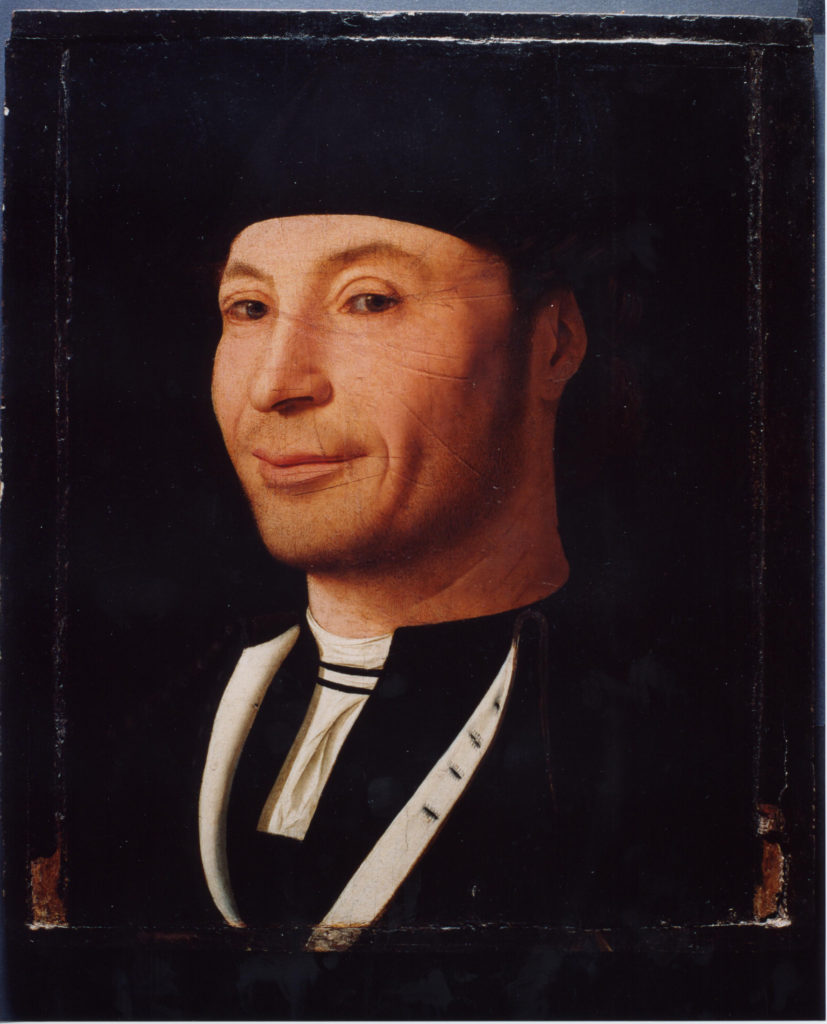
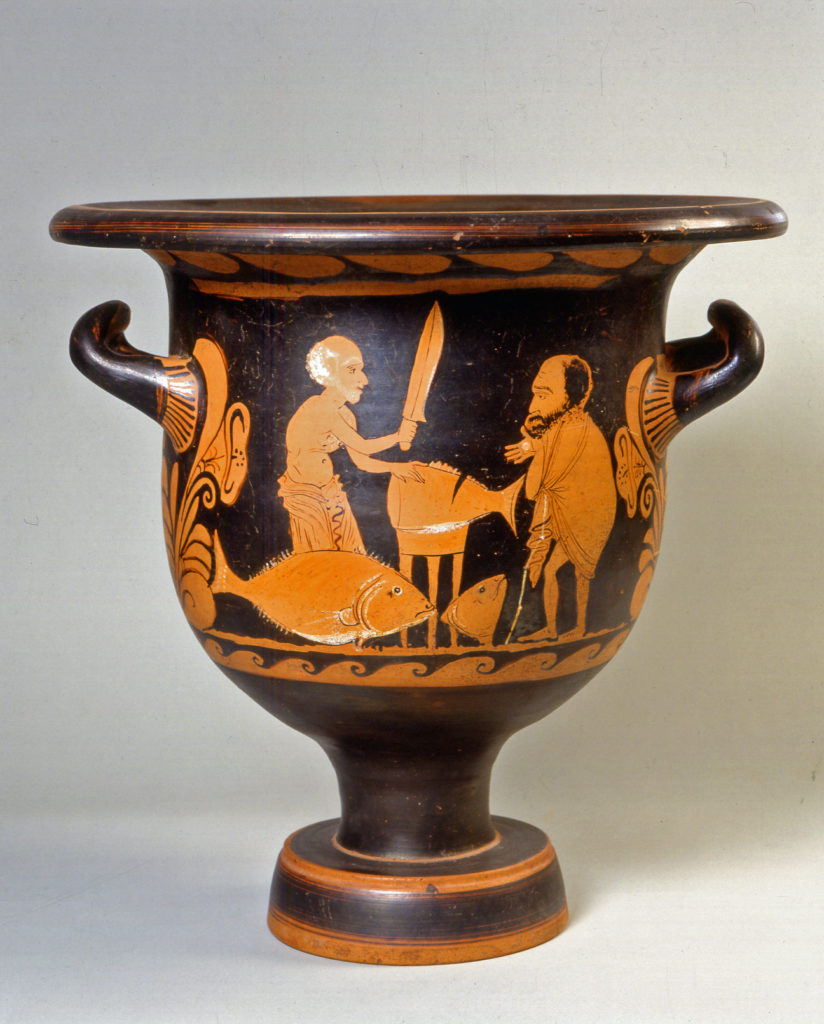
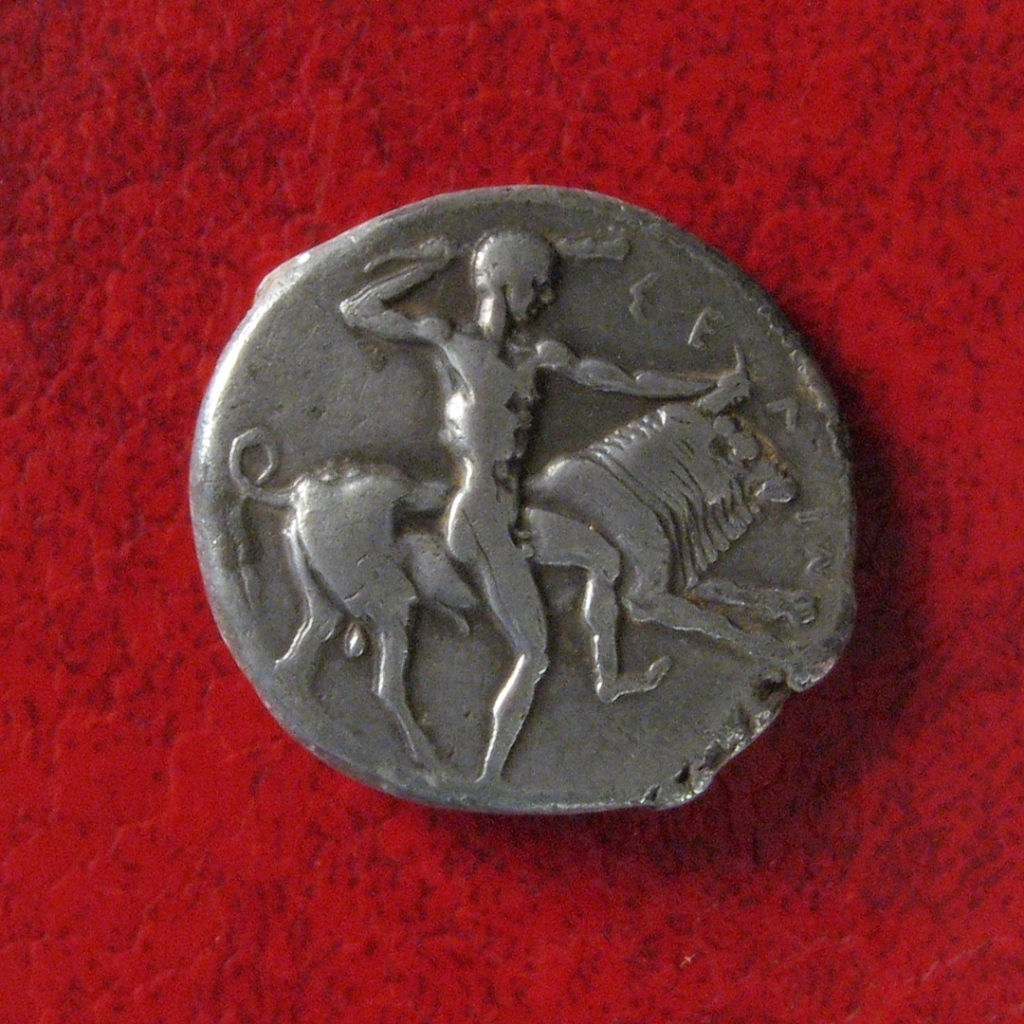
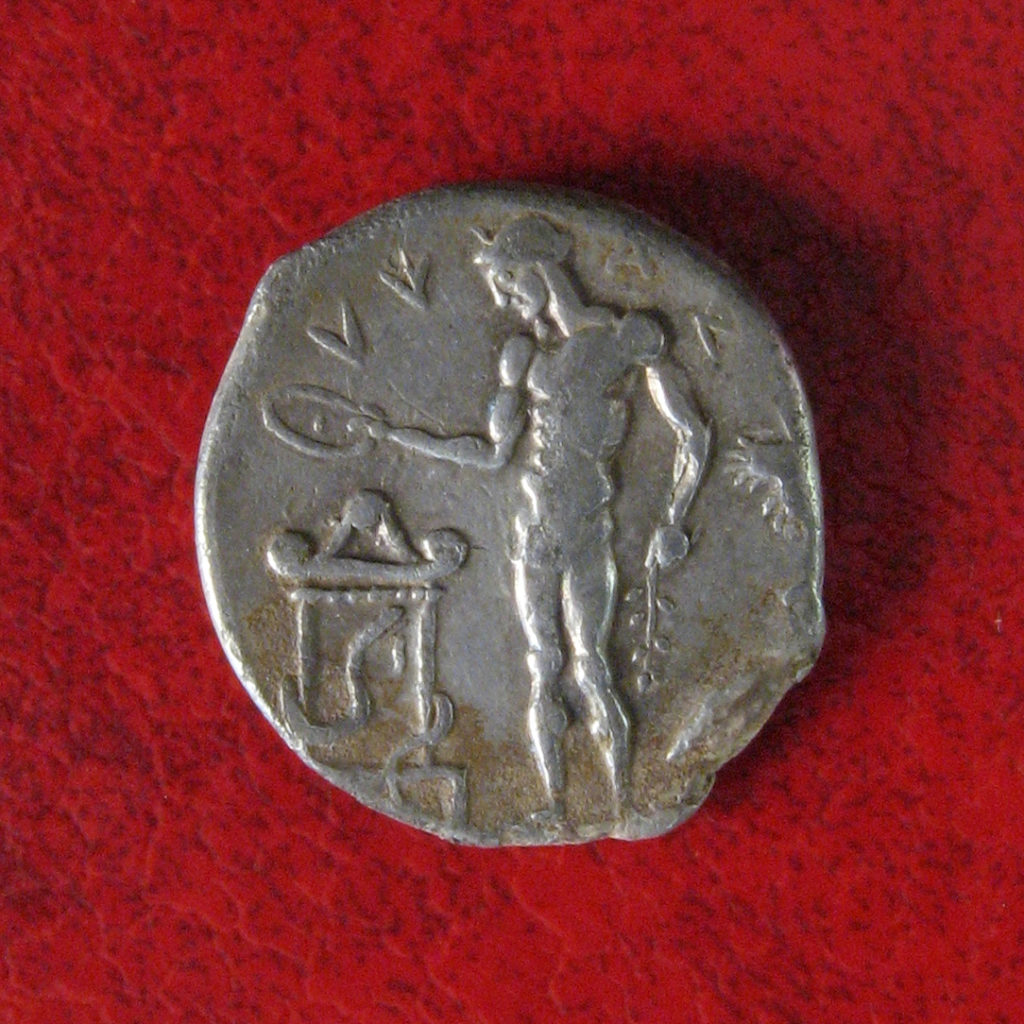
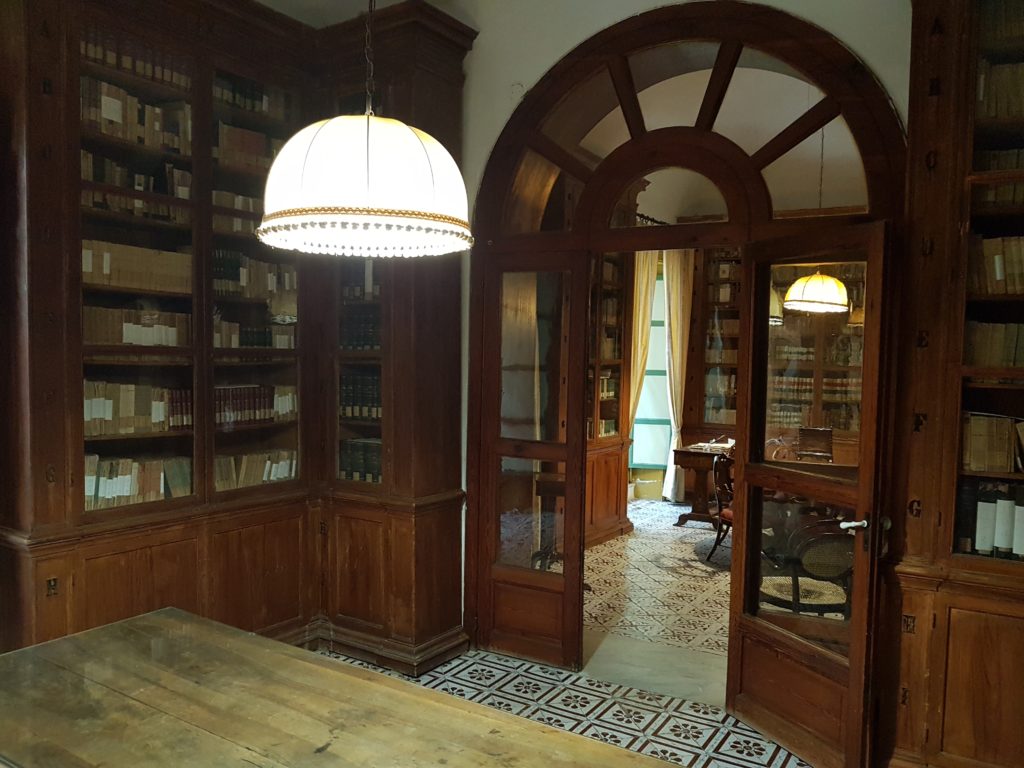
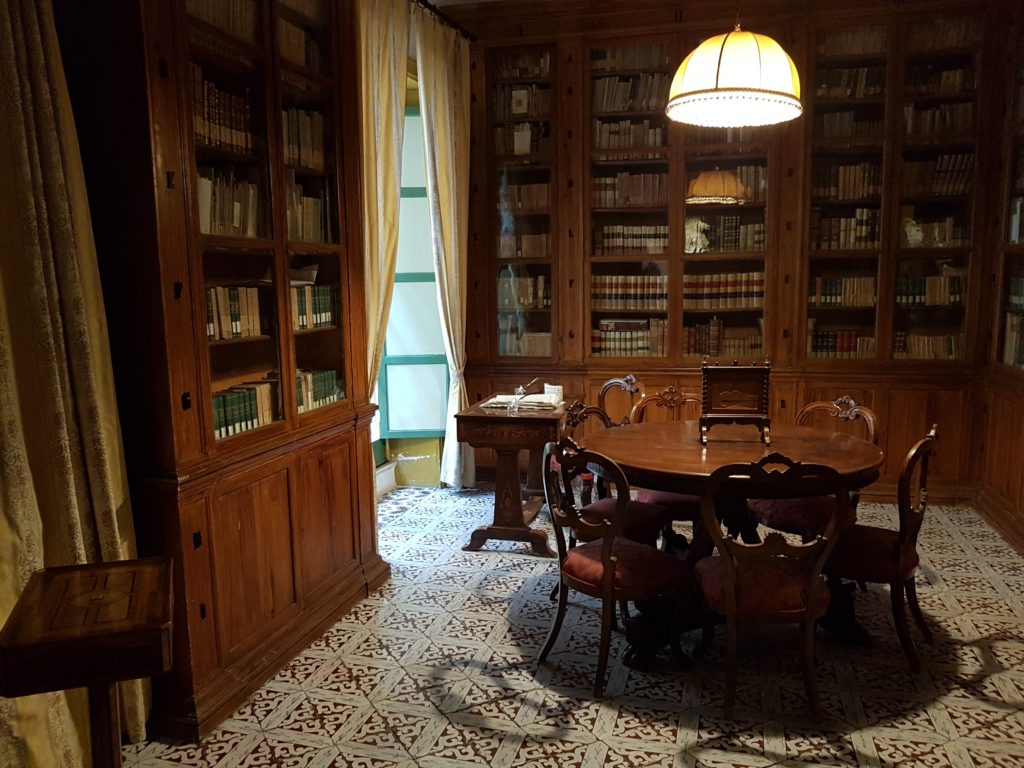
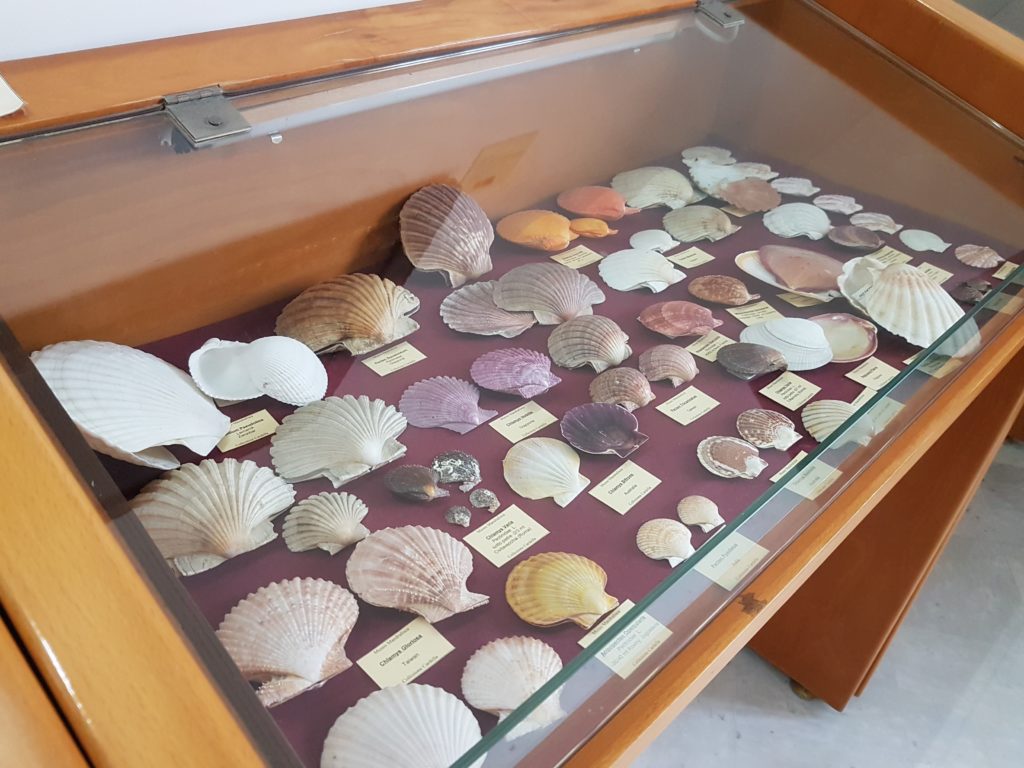
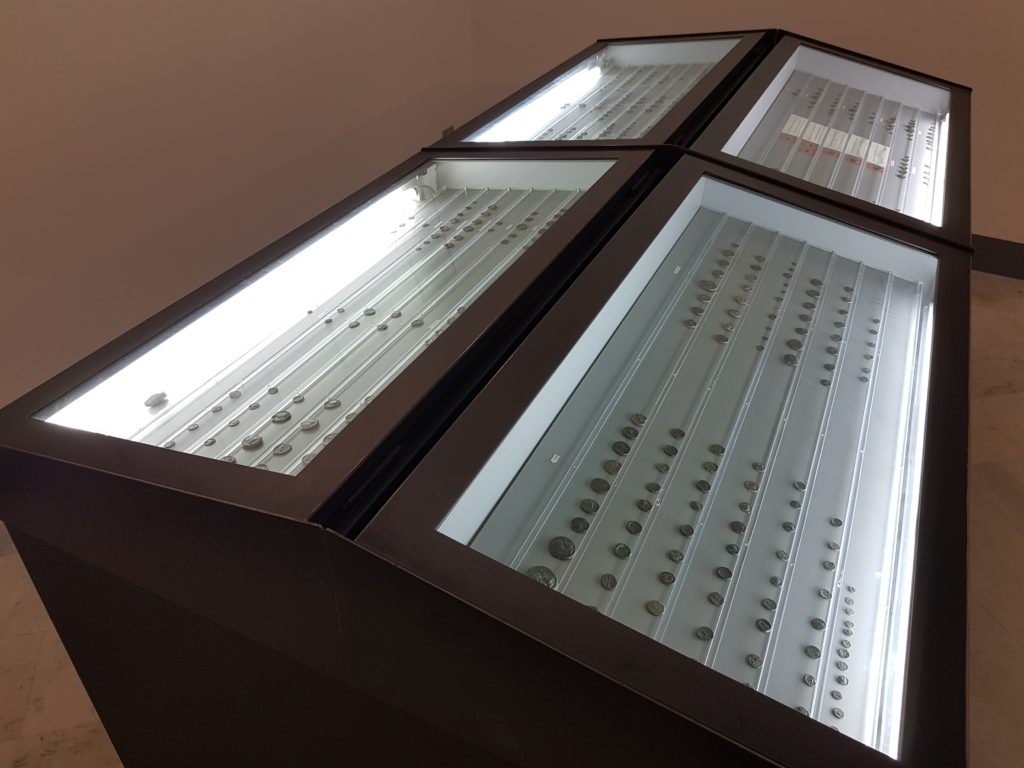
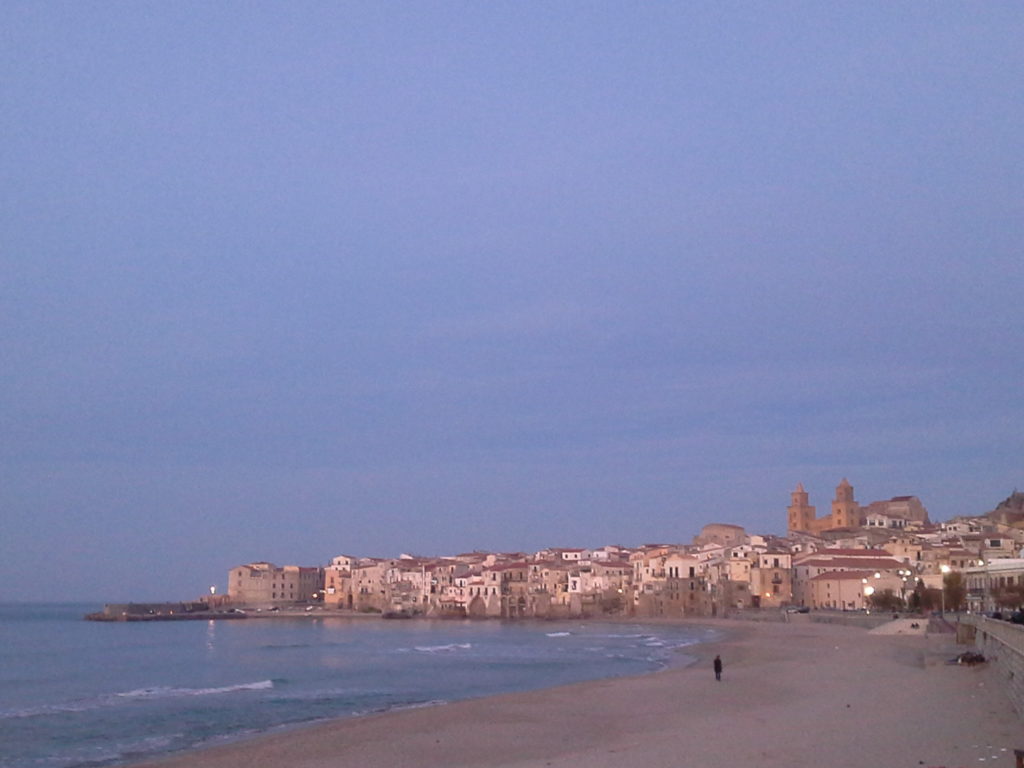
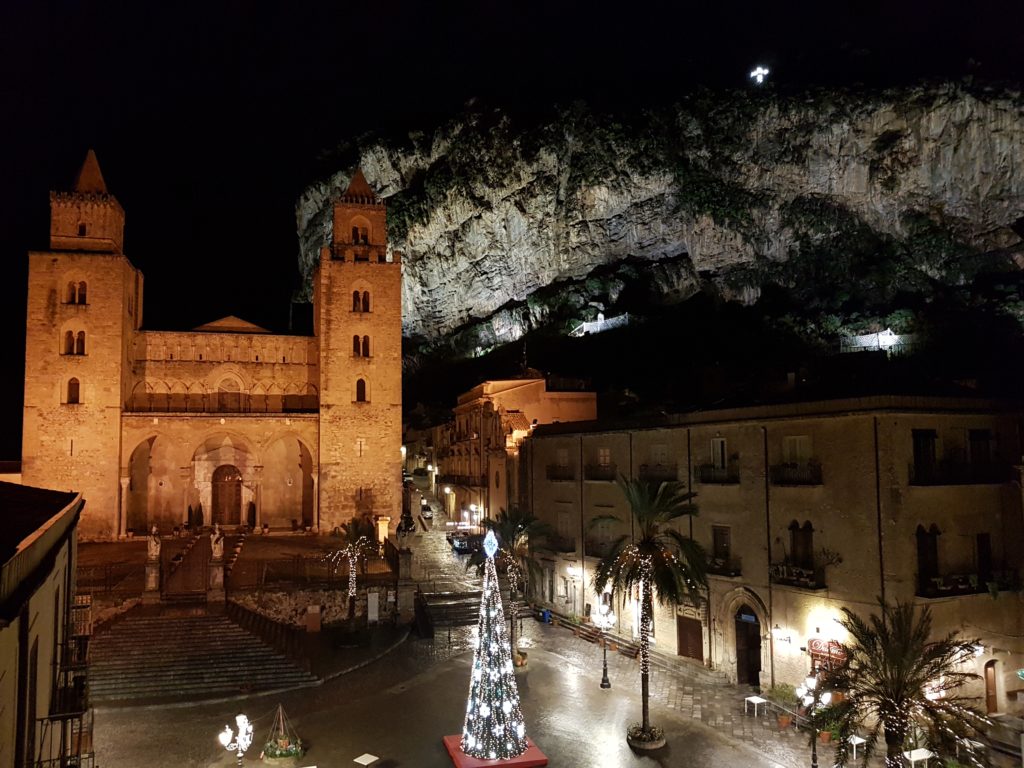
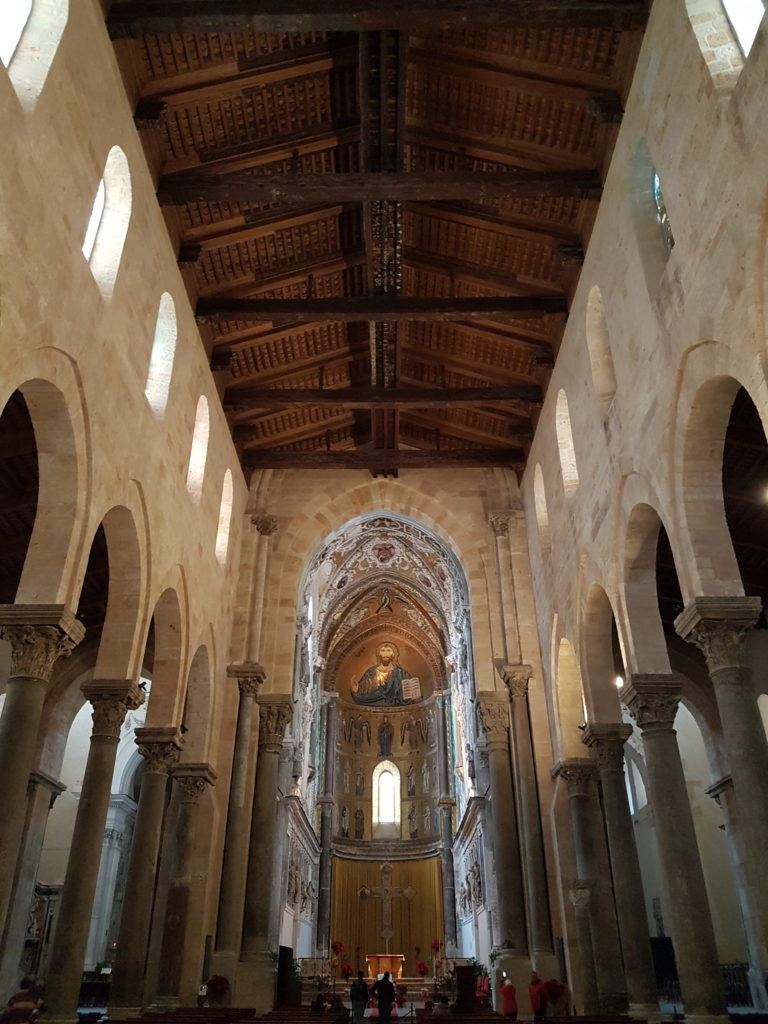

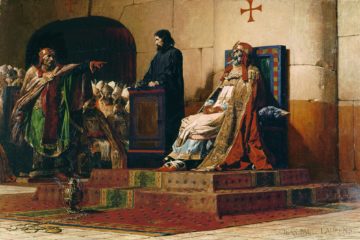

0 Comments